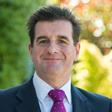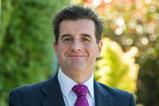This year, HSJ100 assesses who holds power and influence as the service seeks to focus on restoring and accelerating elective services to cope with a massive backlog, writes David Hancock
Once again, InterSystems has been delighted to sponsor the HSJ100 – the annual list of the most powerful and influential people in health and health policy.
This year’s judging panel had the tricky task of assessing who holds power and influence as we come out of the initial waves of a pandemic and the NHS is able to focus on restoring elective services to cope with a massive backlog of people waiting to see a consultant or have a procedure. That challenge has to be balanced with the demands for emergency care and the potential for covid to cause more problems in the future.
Sponsored by
Technology can help the NHS with this, whether it is providing better information to allow more targeted planning to reduce waiting lists, developing innovative solutions to some of the challenges around capacity or driving efficiency. So it was not surprising to see some leading IT figures on the list, both in the top 80 and among the wildcards, but who they are and the changes from last year are interesting.
With the absorption of NHSX and NHS Digital into the NHS England transformation directorate many of the IT leaders on the list from last year didn’t make it this time. They have either left or became far less influential as they have inevitably been focussed on making the re-organisation work. However, in their place comes new and arguably more powerful people. For example, the transformation directorate’s leader Tim Ferris makes number 13, and Ming Tang, the NHS’s chief data and analytics officer, who reports to chief finance officer Julian Kelly, number 20. This reflects the national drive to re-orient digital to the integrated care system level and to further use data in highly innovative ways that were successfully introduced in the pandemic.
There was also an interesting sprinkling of IT people in the wildcards including Natasha Phillips and a leader of a potentially well-placed IT supplier in the eyes of the judges. Over the next year we will see if their work gains traction and starts to change how the NHS works. The potential is massive but should not be seen as data or technology replacing the doctors, nurses and other healthcare professionals who look after patients. Where technology wins is where it makes healthcare professionals’ lives easier and allows their skills and knowledge to be used to best advantage.
As ever, the judges had a difficult job in selecting those to include in the HSJ100 and some names sparked lively debates – as I am sure the list will among readers.
Also read:
HSJ100: Power reshapes around the new bosses
HSJ100 full list: The most influential people in health

HSJ100: Power reshapes around the new bosses

In the eight months since the 2021 HSJ100 was published, more than half the top 20 has changed.
- 1
 Currently
reading
Currently
reading
HSJ100 reveals how IT figures lead the list
- 3
- 4
- 5



































